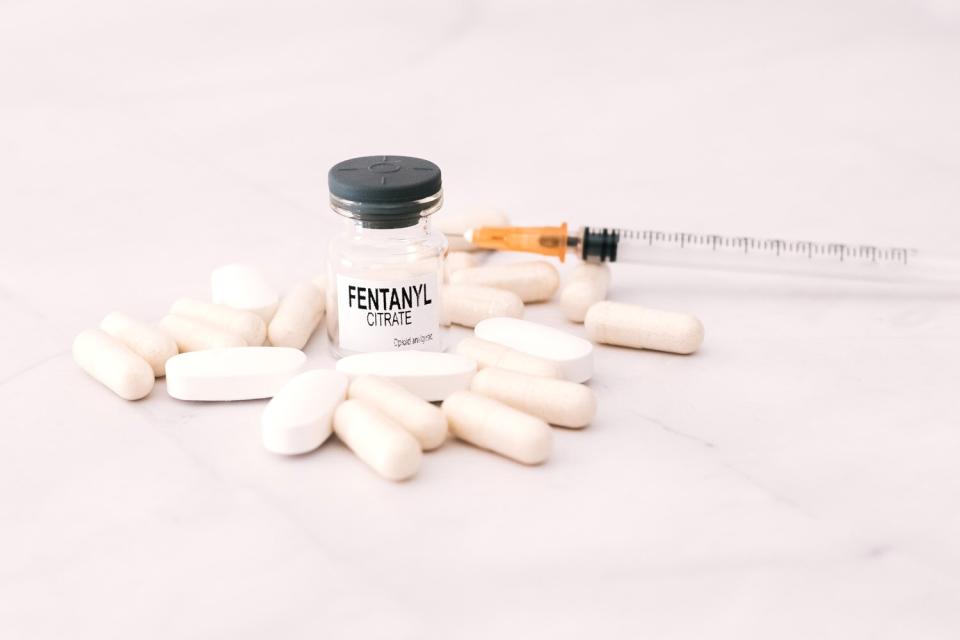Schools in Los Angeles Will Carry Opioid Antidote After Increase in Overdoses: 'An Urgent Crisis'
Schools in Los Angeles will now be equipped with a medication to reverse opioid overdoses in response to several recent fentanyl-related overdoses among students.
On Thursday, the Los Angeles Unified School District announced that all K-12 schools will be provided doses of naloxone at no cost to the district. Naloxone, also known by the brand name Narcan, is a life-saving medication that rapidly reverses an overdose from opioids, including fentanyl, heroin, and prescription opioid medications, according to the CDC.
It can be provided as either a nasal spray or injectable and administered without medical training. Naloxone can quickly restore normal breathing within 2 to 3 minutes and more than one dose may be needed when stronger opioids like fentanyl are involved. Naloxone is not a treatment for opioid use disorder.
The Los Angeles Unified School District said it has also received support for the decision from the Los Angeles Trust for Children's Health and Children's Hospital Los Angeles.
"We have an urgent crisis on our hands," Superintendent Carvalho said in a release. "Research shows that the availability of naloxone along with overdose education is effective at decreasing overdoses and death–and will save lives. We will do everything in our power to ensure that not another student in our community is a victim to the growing opioid epidemic. Keeping students safe and healthy remains our highest priority."

Getty Images
Never miss a story — sign up for PEOPLE's free daily newsletter to stay up-to-date on the best of what PEOPLE has to offer, from juicy celebrity news to compelling human interest stories.
"The opioid epidemic is a community crisis, and today Los Angeles Unified is taking concrete action to protect our students - both by making naloxone readily available and through proactive education and support," Board President Kelly Gonez added. "Our Board and Superintendent are committed to doing everything we can to ensure student safety on our campuses and in our communities."
Along with providing schools with access to the antidote, the district is also implementing a "peer-to-peer counseling" program to warn students of the dangers of fentanyl.
The Los Angeles County Department of Public Health (LACDPH) has reported an increase in fentanyl and methamphetamine related overdose deaths, even prior to the pandemic.
Last week, police were called to Bernstein High School in Hollywood after a 15-year-old girl died of an apparent overdose on campus. Three other students in the area also reportedly overdosed and officials were warned of local drug dealers lacing pills with fentanyl.
RELATED: How Fentanyl Became One of the Biggest Causes of Drug Overdoses in the U.S.

Getty
Fentanyl overdose deaths — particularly accidental fentanyl overdoses — have become increasingly common in the U.S. in recent years. Synthetic opioid overdoses — which includes fentanyl overdoses — increased over 56% from 2019 to 2020.
"We've seen a major increase," Dr. Traci Green, professor and director of the Opioid Policy Research Collective at Brandeis University, told PEOPLE in September 2021. "Fentanyl has reached into communities where it hadn't ever been before."
"It's a medicine, and it's exceptionally important," Green said at the time. "It is how you can have a same-day outpatient surgery or a colonoscopy, and go home and feel okay. It's fast-acting and strong, in so far as it will bring that immediate pain relief."
But "because of the form and because it can be manufactured," she said, people can make their own and formulate it to make it stronger or weaker, which leads to potentially life-threatening situations. And in the loose, illicit manufacturing process, fentanyl often gets mixed in with other similar-looking drugs like cocaine or heroin.
"Unfortunately, it looked like a white powder which looks like a lot of other white powders out there," Green added. "These aren't substances that are prepared, and packaged, and labeled in a way that we know the content and what is what."
It's not uncommon to see what should have been cocaine distributed, that it be fentanyl," she continued. "That often is unintentional. It's unintentional delivery, if you will, unintentional distribution of fentanyl."
If you or someone you know is struggling with substance abuse, please contact the SAMHSA helpline at 1-800-662-HELP.

